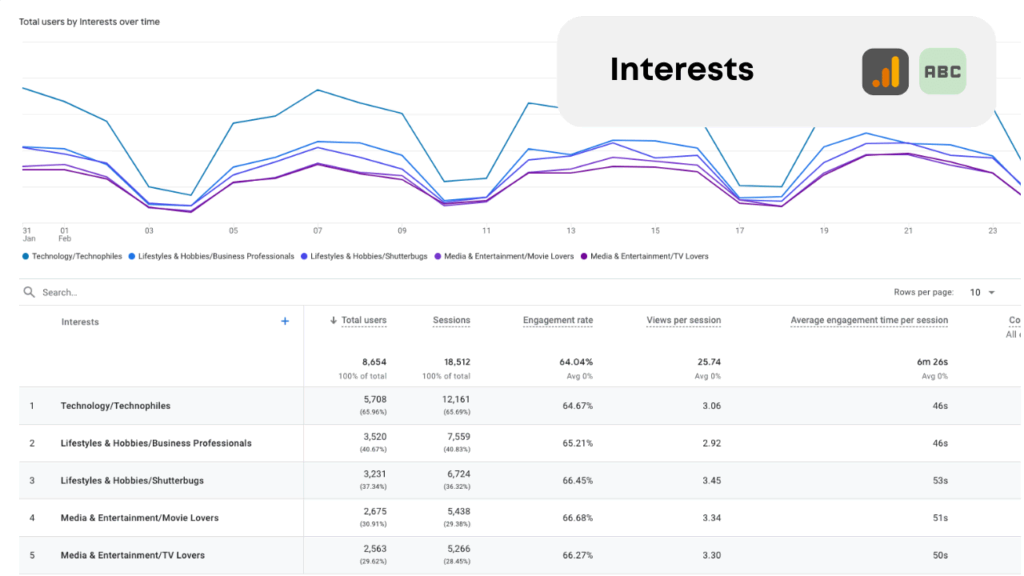Table of Contents
Overview
- Data Source: Google Analytics 4 (with Google Signals activated)
- Type: Text
What is Interests in Google Analytics 4?
Interests in Google Analytics represent the varied categories of content and activities that users show an affinity for, such as ‘Arts & Entertainment’, ‘Games’, or ‘Sports’. These categories, akin to affinity segments in Google Ads, help in understanding the broader lifestyle and preference patterns of your audience.

Description
The Interests dimension allows marketers and website owners to segment their audience based on predefined interest categories. This segmentation is derived from users’ online behaviors, search histories, and content engagement, offering insights into their hobbies, shopping behaviors, and other preferences. Users can be classified into multiple interest categories, providing a multifaceted view of their preferences and potential needs.
Interest Categories
- Shoppers: Users identified as having a strong interest in shopping-related activities and content.
- Lifestyles & Hobbies/Pet Lovers: Users showing an affinity for content and activities related to personal hobbies, including pet care and pet-related interests.
- Travel/Travel Buffs/Beachbound Travelers: Users with a keen interest in travel, particularly those who favor beach destinations.
Note on Data Availability
- The “unknown” dimension value is used when there isn’t sufficient information to determine a user’s interests. This can occur due to data privacy regulations, user settings, or insufficient user data.
- Interest data is populated automatically in Google Analytics when Google Signals is activated, subject to data thresholds that might be applied to ensure user privacy.
Use Cases
- Audience Segmentation: Categorize your audience based on their interests to tailor marketing messages, content, and offers that resonate with their preferences, potentially increasing engagement and conversion rates.
- Content Personalization: Use interest data to personalize website content, recommendations, and advertisements to match user preferences, enhancing user experience and satisfaction.
- Marketing Strategy Development: Inform your broader marketing strategy by understanding the dominant interest categories within your audience, guiding content creation, campaign themes, and channel selection.
- Product Development and Curation: Align product development, curation, and merchandising strategies with the prevailing interests of your audience to better meet their needs and desires.
- Ad Targeting Optimization: Leverage interest categories in ad targeting to reach more relevant audiences on Google Ads and other advertising platforms, improving ad relevance and performance.
Indicators
- High Engagement Segments: Interest categories with high user engagement indicate content and topics that resonate strongly with your audience, suggesting areas for content and marketing focus.
- Emerging Trends: Shifts in interest category popularity can signal emerging trends among your audience, providing opportunities to innovate in content, product offerings, or marketing approaches.

